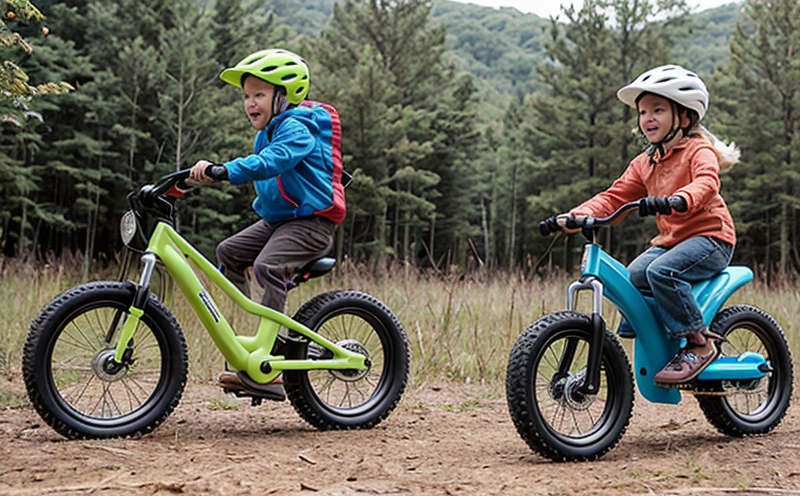EN 71-1 Stability and Overload Testing for Ride-on Toys
The EN 71-1 standard is a crucial part of ensuring toy safety, particularly in Europe. Compliance with this standard is mandatory for toys intended to be sold or used by children under the age of 36 months. This section focuses on stability and overload testing as defined in EN 71-1, specifically applicable to ride-on toys.
Ride-on toys are a popular category of outdoor equipment that can pose significant risks if not designed with safety in mind. These toys often involve movement, which increases the likelihood of accidents. Stability is a critical factor when assessing the safety of these products; any instability could lead to a fall or injury for the child using it.
Stability and overload testing aims to ensure that ride-on toys do not tip over under normal use conditions or in situations where excessive force is applied, such as when a child falls off. The test simulates real-world scenarios to verify that the toy remains stable even under these challenging circumstances. This is particularly important given that many children are still developing their balance and coordination skills.
The testing process involves applying both static and dynamic loads to the ride-on toy. Static load tests measure how well the toy holds its position when subjected to a specific weight or force, simulating a child sitting on it or standing up. Dynamic load tests assess the stability of the toy when it is in motion or being pushed by an external force.
For accurate testing, specimens must be prepared according to strict guidelines outlined in EN 71-1. This includes ensuring that all parts of the toy are securely attached and that any detachable components are included in the test. The apparatus used for this type of testing typically consists of a platform or stand designed to hold the ride-on toy while applying the necessary loads.
The acceptance criteria for stability tests can be found in EN 71-1:2019. A toy passes the stability and overload test if it remains stable under both static and dynamic load conditions. The degree of stability required depends on the type and size of the ride-on toy. For example, larger toys with more complex structures may have higher thresholds for stability.
This testing is not only important for ensuring safety but also plays a role in protecting manufacturers from potential legal issues. Compliance with EN 71-1 can be used as evidence that due diligence has been exercised to ensure the toy meets all required safety standards.
Understanding the implications of non-compliance is equally important. Failure to meet these requirements could result in product recalls, fines, and damage to a company's reputation. In extreme cases, it may even lead to legal action or product liability claims against manufacturers.
Why It Matters
The importance of stability and overload testing cannot be overstated. Ride-on toys are frequently used by children who are still learning to control their movements and balance. A stable ride-on toy provides a safer environment for play, reducing the risk of falls and associated injuries.
In addition to safety concerns, compliance with EN 71-1 helps protect manufacturers from potential legal issues. It demonstrates that due diligence has been exercised in ensuring product safety, which can be crucial during audits or if any issues arise post-market.
From a broader perspective, ensuring the stability of ride-on toys contributes to fostering trust between parents and toy manufacturers. This trust is essential for maintaining consumer confidence and supporting the industry's reputation.
Scope and Methodology
| Test Parameters | Description |
|---|---|
| Static Load Application | The toy is subjected to a load equivalent to the weight of a child and their belongings, ensuring it remains stable without tipping. |
| Dynamic Load Application | The toy undergoes simulated movement or impact conditions that mimic real-world scenarios such as a child falling off. |
For accurate testing, specimens must be prepared according to strict guidelines outlined in EN 71-1. This includes ensuring all parts are securely attached and any detachable components are included in the test.
The apparatus used for this type of testing typically consists of a platform or stand designed to hold the ride-on toy while applying the necessary loads. The acceptance criteria for stability tests can be found in EN 71-1:2019, which specifies that a toy passes if it remains stable under both static and dynamic load conditions.
Use Cases and Application Examples
| Scenario | Description |
|---|---|
| Ride-on Toy in Use by a Child | The toy is tested under conditions simulating normal use, ensuring it remains stable when the child is seated or standing. |
| Toy Subjected to External Force | The toy is subjected to simulated external forces such as a fall off the ride-on toy. |
In real-world applications, this testing ensures that ride-on toys are safe for children to use. For instance, a manufacturer might test a new line of scooters to ensure they meet all stability and overload requirements before putting them on the market.
Another example could involve a toy company recalling a batch of bicycles due to stability issues identified during EN 71-1 testing. By addressing these issues promptly, the company can prevent potential accidents and maintain its commitment to safety.





